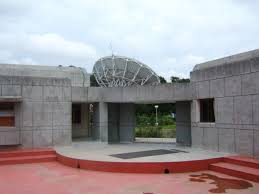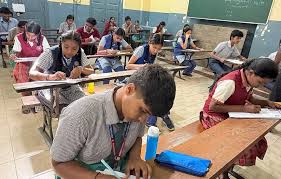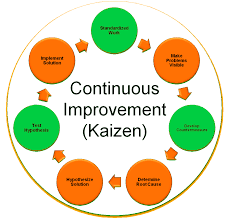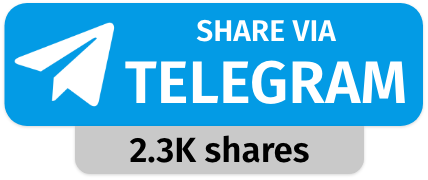Today’s Current Affairs: 28th March 2025 for UPSC IAS exams, State PSC exams, SSC CGL, State SSC, RRB, Railways, Banking Exam & IBPS, etc
Table of Contents
Bhaskaracharya National Institute for Space Applications and Geo-informatics:

The Comptroller and Auditor General (CAG) signed an MoU with BISAG-N to integrate remote sensing and GIS technologies into the audit process.
BISAG-N:
- A national-level technical agency providing space and geo-spatial solutions for governance, planning, and development.
- Established in Originally founded as Remote Sensing and Communication Centre (RESECO) in 1997.
- Renamed BISAG in 2003, after Bhaskaracharya, the 12th-century Indian mathematician.
- Headquarters: Located in Gandhinagar, Gujarat
- Operates under the Ministry of Electronics and Information Technology (MeitY), Government of India.
- Objectives of BISAG-N:
- Leverage geo-spatial and satellite technologies for inclusive socio-economic development and policy implementation.
- Support governance frameworks like Digital India, PM-GatiShakti, and disaster management through end-to-end GIS-based solutions.
- Drive innovation in public services by integrating AI, ML, and big data analytics tailored to government requirements.
- Key Functions of BISAG-N:
- Offers satellite-based services including remote sensing, photogrammetry, terrain modelling, and disaster analytics.
- Provides data creation, migration, visualisation tools, and map-based decision-making systems.
- Develops ERP, MIS, GNSS-linked digital tools across sectors like land, agriculture, education, and health.
- Conducts training for officials and supports startups through satellite communication and finishing schools.
- Leads innovation in AI, IoT, blockchain, and builds customised software for central/state departments.
Samagra Shiksha Abhiyan (SSA):

A Parliamentary Standing Committee has urged the Education Ministry to release over ₹4,000 crore in pending Samagra Shiksha Abhiyan (SSA) funds to Tamil Nadu, Kerala, and West Bengal.
- The panel said it is unjustified to link SSA funding with a state’s decision to not sign the PM SHRI MoU.SSA is a centrally sponsored umbrella scheme aimed at integrated school education from pre-school to Class 12.
- Launched in 2018, by merging three schemes – Sarva Shiksha Abhiyan, Rashtriya Madhyamik Shiksha Abhiyan, and Teacher Education.
- Implemented by Ministry of Education, Government of India.
- Fund sharing:
- 90:10 for North-Eastern & Himalayan States
- 60:40 for other States
- 100% for UTs without Legislature
Kaizen Philosophy:

The Gujarat Administrative Reforms Commission (GARC) submitted its first report recommending the adoption of Kaizen, a Japanese method of continuous improvement, in government operations.
- Kaizen translates to “change for better” or continuous improvement.
- It focuses on small, consistent improvements involving all employees to improve overall system performance.
- Core Features of Kaizen:
- Continuous Improvement: Encourages small, incremental changes for long-term efficiency.
- Employee Involvement: Every worker is empowered to suggest process improvements.
- Standardization: Streamlined procedures to maintain consistency.
- Waste Elimination (Muda): Cuts down unnecessary steps, time, or resource use.
- Customer-Centric Approach: Enhances service delivery to meet citizen needs.
India Bioeconomy:

The India BioEconomy Report 2024, released by the Department of Biotechnology, highlighted that India’s bioeconomy crossed $165 billion, contributing 4.2% of GDP. It charts a roadmap to reach $300 billion by 2030 and $1 trillion by 2047.
- Bioeconomy doubled from $86 billion (2020) to $165 billion (2024), with projections of $1 trillion by 2047.
- Industrial & Pharma Dominance: 48% value came from industrial bioeconomy (biofuels, bioplastics); 35% from pharma, majorly vaccines.
- Number of companies grew from 5,365 in 2021 to 10,075 in 2024, expected to double again by 2030.
- Projected to generate 35 million jobs by 2030 through biotech research, IT, and bio-manufacturing.
- 5 states (MH, KA, TG, GJ, AP) contribute two-thirds of total value; NE and Eastern India underperform (<6%).
- Research & IT—including bioinformatics, clinical trials, and biotech software—is seeing the highest annual growth.
BioSaarthi Mentorship Initiative:
-
- Union Minister unveiled the BioSaarthi Mentorship Initiative at the 13th Foundation Day of BIRAC, highlighting India’s rapid rise in the global bioeconomy. A structured global mentorship program aimed at nurturing India’s emerging biotech startups through expert guidance and capacity building. Ministry of Science and Technology, Government of India. Implementing Agency: Biotechnology Industry Research Assistance Council (BIRAC) under the Department of Biotechnology (DBT). Objective is To strengthen India’s biotechnology ecosystem by supporting startups, fostering innovation, and promoting global competitiveness through mentorship.
BHIM 3.0:

The NPCI BHIM Services Limited (NBSL), a subsidiary of National Payments Corporation of India (NPCI) has launched Bharat Interface for Money (BHIM) 3.0 app.
- BHIM 3.0 is an upgraded version of BHIM.
- BHIM Unified Payment Interface (UPI) was launched in 2016 to provide a simple, fast, and secure method for cashless payments using UPI technology.
- It enabled users to send and receive money instantly through mobile phones, without requiring bank account details.
- BHIM 3.0 has enhanced accessibility and security with support for 15+ languages, low-internet optimization, and improved security features for safer transactions.
- For users, it offers Split Expenses, Spends Analytics, and an Action Needed Assistant (reminders for pending bills) for better expense tracking and financial management.
- For merchants, BHIM Vega offers a seamless in-app payment system, enabling seamless transactions without switching platforms.
Sahyog Portal:

X Corp (formerly Twitter) has filed a lawsuit in the High Court against the Indian government, challenging alleged censorship and content regulation through Section 79 of the Information Technology (IT) Act, 2000 and the newly introduced Sahyog portal.
- X argued that content regulation orders be issued only under Section 69A of the IT Act, 2000.
- The Sahyog Portal has been launched by the Ministry of Home Affairs (MHA) to enhance collaboration between government agencies and social media intermediaries for easy compliance and safer cyberspace.
- It streamlines the reporting and removal of unlawful content and facilitates data requests from law enforcement under the IT Act, 2000.
- It integrates authorized agencies (like police) and intermediaries on a single platform, ensuring swift action against illegal digital activities.
5 Years of National Technical Textiles Mission:
India’s textile industry plays a crucial role in the national economy and has evolved into a hub of innovation. The country ranks as the 6th largest textile exporter globally, holding a 3.9% share in world textile exports. Contributing nearly 2% to the GDP, the sector is projected to expand to $350 billion by 2030, generating approximately 3.5 crore jobs. While traditional textiles remain fundamental, the rise of technical textiles is transforming the industry. These specialized fabrics prioritize functionality over aesthetics and are categorized into 12 types, serving diverse industries such as agriculture, healthcare, construction, and safety.
Growth Of India’s Automobile Sector:

India’s automobile sector under ‘Make in India’ initiative has witnessed record growth in 2023-24, with total vehicle production reaching 28 million units the sector is transforming into a global manufacturing hub, especially for Electric Vehicles (EVs).
Growth Trajectory of India’s Automobile Sector:
- The automobile industry was de-licensed in 1991, and subsequent opening up for 100% Foreign Direct Investment (FDI) via the automatic route.
- This opened doors for global manufacturers like Suzuki, Hyundai, and Honda to set up production units in India.
- Vehicle production increased from 2 million units (1991-92) to 28 million (2023-24).
- Contribution to Economy: India’s automotive industry has a USD 240 billion turnover, the sector contributes approximately 6% to India’s GDP and supports about 30 million jobs (4.2 million direct and 26.5 million indirect)
- India’s auto components industry contributes 2.3% to GDP and directly employs 1.5 million people.
- In FY24, the industry’s turnover reached Rs. 6.14 lakh crore (USD 74.1 billion), with 54% of supplies catering to domestic original equipment manufacturers and 18% to exports.
- Growing at a Compound Annual Growth Rate (CAGR) of 8.63% (FY16-FY24), exports stood at USD 21.2 billion in FY24 and are projected to reach USD 30 billion by 2026.
- Electric Vehicle Push: EV registrations crossed 4.4 million by August 2024.
- The EV market penetration stood at 6.6%.
Government to Mobilise Rs 8 Lakh Crore via Bonds in H1 of FY26:
The Indian government plans to raise Rs 8 lakh crore through dated securities in the first half (H1) of the financial year 2025-26 to bridge the fiscal deficit. This is part of the total gross market borrowing of Rs 14.82 lakh crore estimated for FY26, as announced by the finance ministry. The borrowing will be carried out through multiple weekly auctions and will include Rs 10,000 crore of Sovereign Green Bonds (SGrBs). The fiscal deficit for FY26 is estimated at 4.4% of GDP, amounting to Rs 15.68 lakh crore. The government will also employ small savings and other instruments to finance the shortfall.
Digital Crop Survey (DCS) System:
The Ministry of Agriculture and Farmers Welfare has introduced the Digital Crop Survey (DCS) System to collect real-time crop-sown details directly from the field via a mobile interface. This system enhances accuracy in crop area estimation, contributing to precise agricultural production forecasting.
Cabinet Approves 2% Hike in DA for Government Employees:
The Union Cabinet, chaired by Prime Minister Narendra Modi, approved a 2% increase in Dearness Allowance (DA) for central government employees and Dearness Relief (DR) for pensioners. This hike, effective from January 1, 2025, raises the DA from 53% to 55% of Basic Pay/Pension, benefiting approximately 48.66 lakh employees and 66.55 lakh pensioners.
HDFC Bank Embassy Fixed Deposit:
HDFC Bank has outlined the details of its Embassy Deposits, which are exclusively available to diplomats, non-diplomatic staff, and diplomatic missions. These deposits are Foreign Currency (FCY) Term Deposits, currently available only in USD (United States Dollar). The latest update specifies the minimum deposit amount, interest rates, and renewal policies effective from March 18, 2025.
Indian and US Courts on Contempt:
The US President’s possible defiance of a US district court ruling on withholding foreign aid highlights tensions between the judiciary and executive, raising concerns over separation of powers and possible contempt proceedings. This situation brings into focus how courts in different democratic systems enforce compliance with judicial orders, particularly in the US and India.Contempt of court is a legal mechanism to protect the judiciary from attacks or unwarranted criticism, and to punish those who undermine its authority.
JSW Steel Becomes the World’s Highest-Valued Steelmaker with Over $30 Billion Market Capitalisation:
JSW Steel, led by Sajjan Jindal, has achieved a remarkable milestone by becoming the world’s highest-valued steel manufacturer, surpassing US-based Nucor Corp. The company’s market capitalisation crossed the $30 billion mark, driven by strong stock performance and government recommendations aimed at protecting domestic steel producers from cheap imports. This surge in valuation has positioned JSW Steel ahead of major global steel manufacturers like ArcelorMittal, Nippon Steel, and Baoshan Iron.




